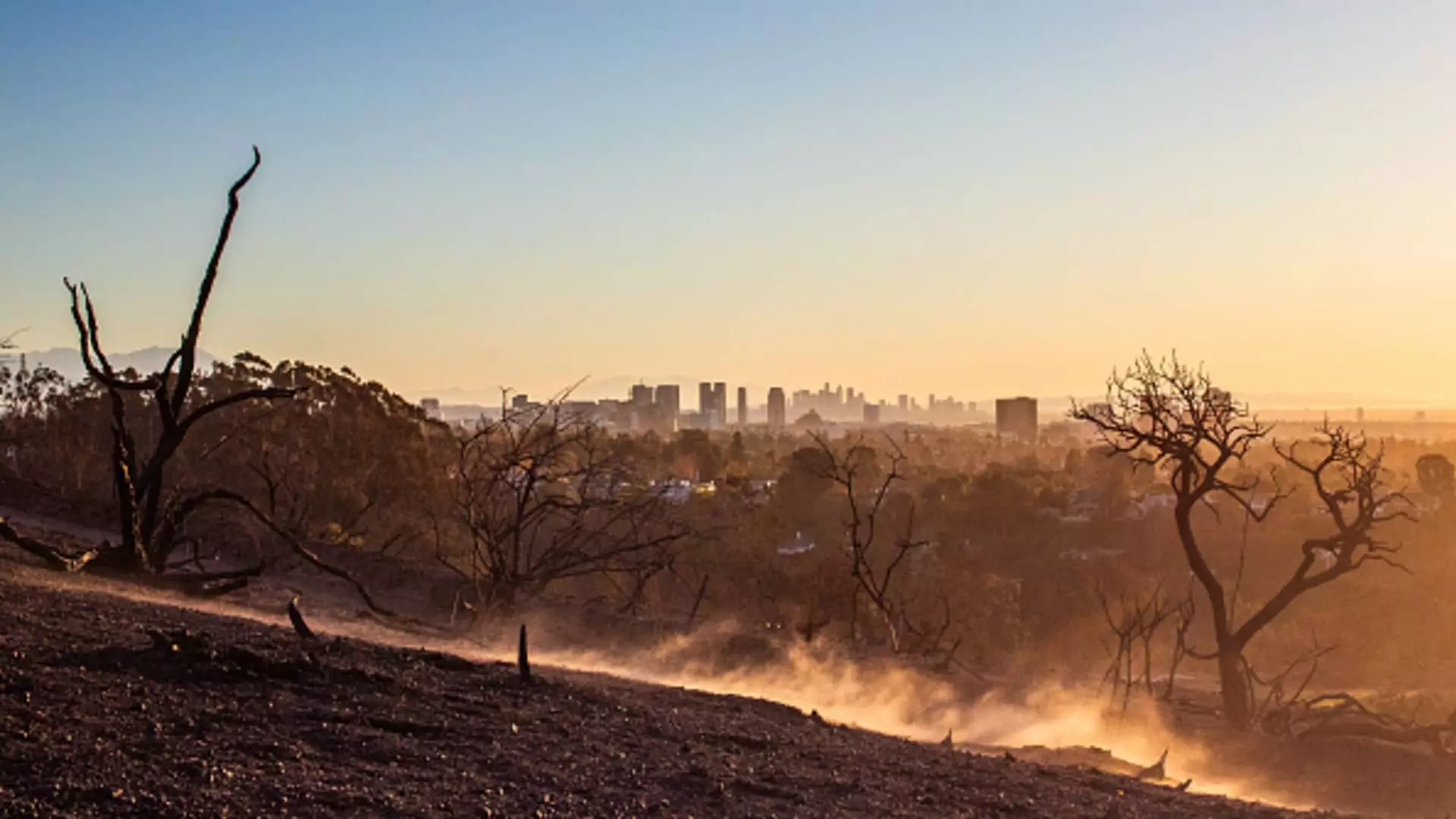The landscape of homeowners’ insurance is undergoing a seismic shift spurred by increasing occurrences of natural disasters, particularly in regions like California, where this year’s intense wildfires have drawn sharp attention. Analysts predict that these fires may lead to the highest insured losses in United States history, with estimates surpassing $20 billion, as noted by prominent financial institutions like JPMorgan and Wells Fargo. This situation signifies a broader trend: the inevitable rise in insurance premiums across the nation that homeowners will soon have to confront.
Precarious Insured Losses and Rising Premiums
As natural disasters become more frequent and damaging, the financial repercussions directly affect insurers and, consequently, policyholders. In California, harsh regulations have been put into place that allow insurers to adjust rates based on the level of risk associated with properties in fire-prone zones. The recent escalation in premiums—according to sources—reflects rate hikes of up to 34% for some insurance companies, indicating a distressing trajectory for homeowners already burdened by rising costs of living.
In light of these events, experts underscore the clear relationship between natural disasters and the costs borne by insurance providers. Patrick Douville, a significant voice in the insurance industry, recently suggested implementing risk-based pricing to stabilize premiums, cautioning that such adjustments might lead to unaffordability for some homeowners. Hence, this phenomenon creates a perilous loop, compelling homeowners to ponder whether they will be able to maintain their coverage amidst soaring premiums.
The consequences of filing insurance claims after natural disasters are startling. On average, a single fire claim can lead to a 29% spike in premiums, while two claims can result in astonishing increases of up to 60%. Such statistics cast a grim shadow over the notion of home protection and peace of mind. Janet Ruiz of the Insurance Information Institute emphasized that insurers must collect enough premiums to cover resultant claims, thereby drawing a direct correlation between the frequency of claims and the ensuing rate adjustments.
However, this trend is not isolated to California; homeowners across the United States are increasingly grappling with the influence of escalating climate conditions on their insurance rates. While some states operate under stringent regulatory frameworks that stabilize rates, less-regulated states inevitably absorb the financial repercussions through heightened premiums. This situation creates a disparity wherein homeowners in highly regulated areas may not face immediate premium increases, but are not insulated from the overarching trends that inflate rates nationwide.
The implications of climate change are not confined to a single region; recent analyses reveal that nearly half of all homes in the U.S. are at risk from severe or extreme environmental threats. With the National Oceanic and Atmospheric Administration citing a record number of costly natural disasters, from winter storms to wildfires, insurers are left grappling with increased liabilities. To preemptively address these challenges, many homeowners are advised to reassess their insurance needs regularly—the results of which could prove to be paramount in crisis scenarios.
Furthermore, a working paper from the National Bureau of Economic Research projects a staggering hike in average premiums—up to $700 more annually for households exposed to climate-related risks by 2053. As these trends unfold, it becomes increasingly crucial for homeowners to ensure they are adequately covered against potential losses and to remain vigilant about the shifting cost dynamics associated with their policies.
Given the rapidly changing insurance landscape, what can homeowners do to safeguard themselves against impending premium increases? First and foremost, regular evaluations of home insurance policies are critical. Homeowners should consider obtaining an updated cost estimate for rebuilding their homes, ideally through discussions with local contractors. This proactive approach enables policyholders to adjust their coverage according to realistic rebuilding costs and helps mitigate the risks associated with underinsurance.
Additionally, as not all policies automatically include flood coverage, homeowners are advised to purchase a separate flood insurance policy to combat potential vulnerabilities. The Consumer Financial Protection Bureau’s report indicates that many households are woefully unprepared for flooding, a risk that could go unmitigated without the proper insurance.
To conclude, the trajectory of homeowners’ insurance is evolving rapidly, driven significantly by climate-related challenges and the increased frequency of natural disasters across the U.S. While rising premiums pose considerable challenges, home insurance can still provide a crucial safety net for many. Homeowners must stay informed, adapt their policies proactively, and engage with industry insights to navigate this new insurance landscape effectively.

